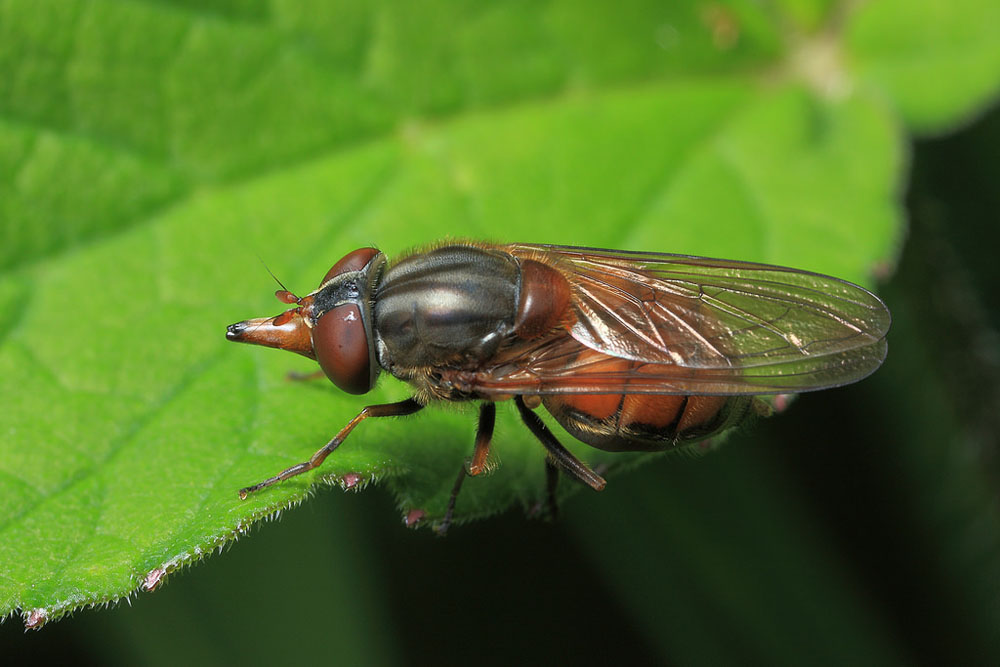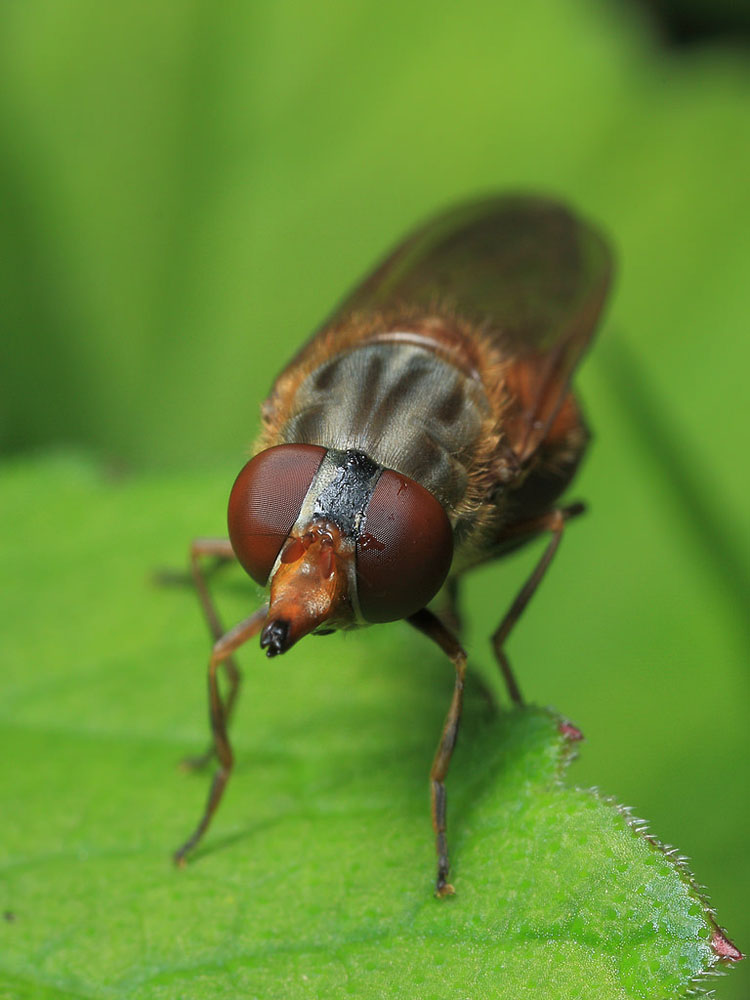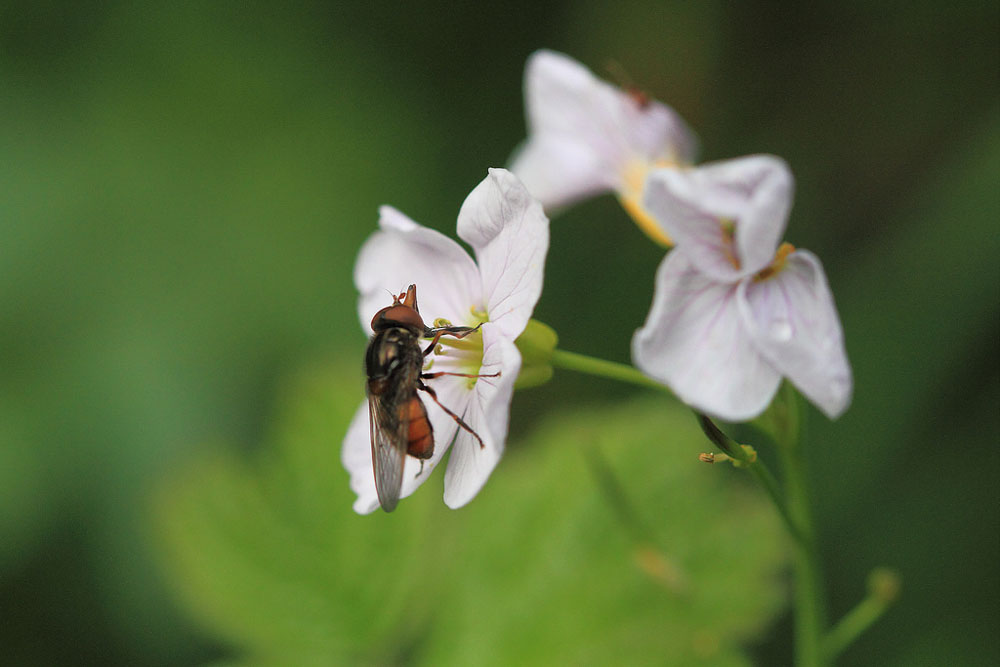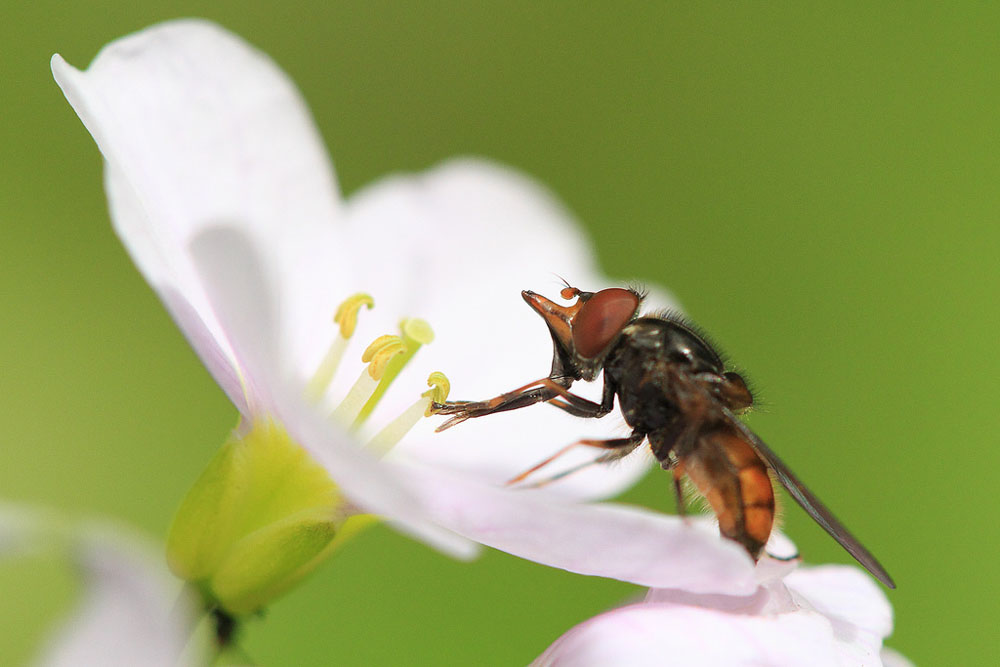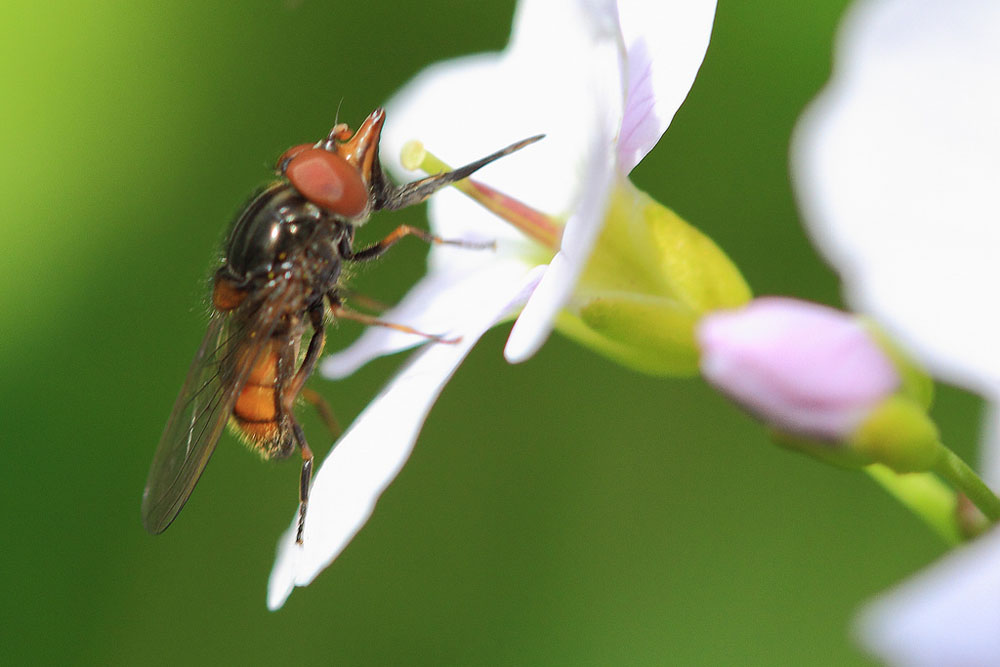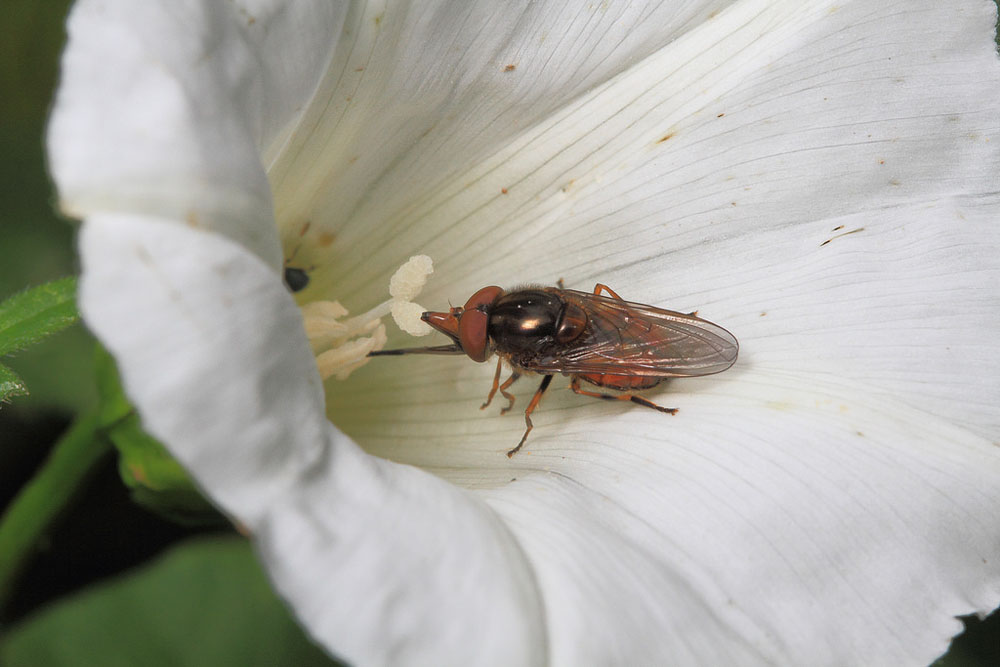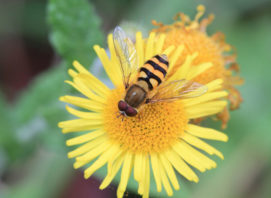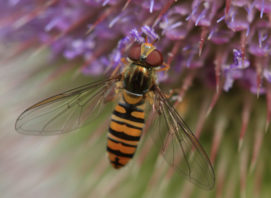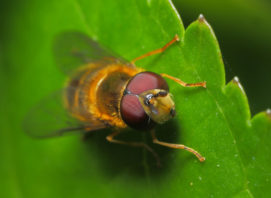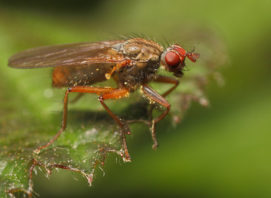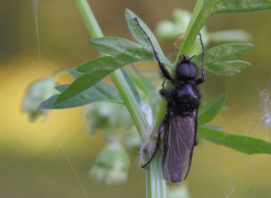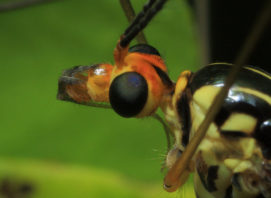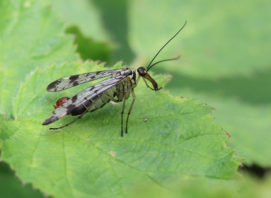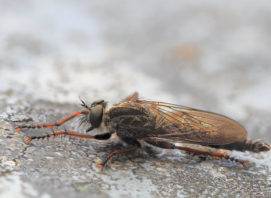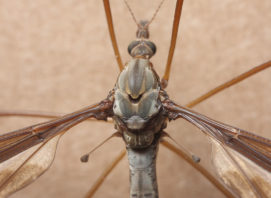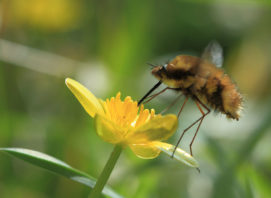Rhingia campestris
Rhingia: An unmistakable genus of dumpy orange overfills with a very obvious, exceptionally long rostrum that encloses the proboscis and allows the fly to feed on nectar and pollen in deep flowers, such as Red Campion, that other overfills cannot reach. The larvae live in fresh cattle dung, but can also be found in other highly enriched wet media such as silage. Its abundance in areas with few cattle, such as East Anglia, suggests that breeding habitats other than cow dung must be significant.
Rhingia campestris: The only species with which can be confused is R. rostrata. In R. campestris, the edges of the abdomen are darkened and the legs, face and scuttled are all duller and darker in colour.
A common and widespread species with two generations, one flying in May-June and the other in mid – to late Summer. It is most common in woodland and field edges but can be found in almost all habitats. It visits a wide range of flowers, including those with deep tubes, such as Red Campion and Bluebell, which other overfills cannot utilise.
Quoted from, Britains Hoverflies by Stuart Ball and Roger Morris (WILDGuides)

